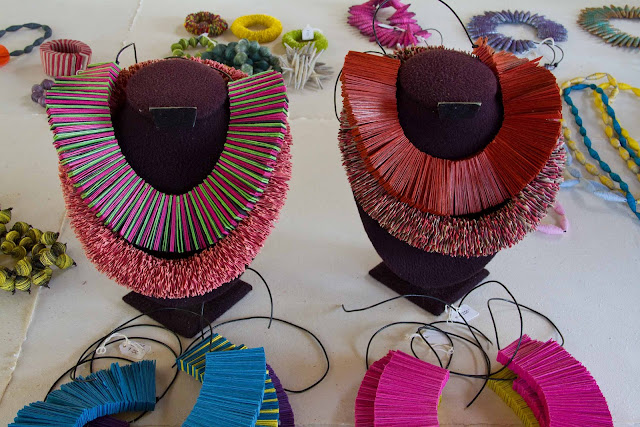 |
| Francisco Toledo at an inaugurati |
Many consider Francisco
Toledo the greatest living artist of Mexico. He has come to be synonymous with
Mexico's soul or at least the soul of his beloved state, Oaxaca. Through him the heritage of his people
has been refined and through him has poured into an astonishing array of work.
To feel Mexico, immerse yourself in the work of Toledo.
 |
| One of his designs on a kite at the paper factory in San Agustín Etla |
In 1950 Toledo began his
career in the printing studio of Arturo Garcia Bustos and then went on to study
at the Escuela de Bellas Artes de Oaxaca. He went to Mexico City in 1957 where
he studied graphic arts under Guillermo Silva Santamaria. In 1959 Toledo exhibited his work for
the first time at the Antonio Souza Gallery. By the time he was 20, he had taken residence in Europe
remaining for five years settling in Paris. By the time he returned to Mexico
in 1965, he was already a recognized artist celebrated for his development of
the mythic and his sacred sense of life. He integrated himself into the
artistic community of Oaxaca, mastering an incredible array of media including
lithography, engraving, sculpture, ceramics and painting. He designed
tapestries with the weavers of Teotitlan de Valle executing his designs.
 |
| A mobile figure laser cut from x-ray film |
The world was seduced by the
power of his creations bordering on the fantastic fused with the real that
resides in nature, and takes on the fantastic when inspired art raises it to
the highest degree. Toledo is a
visual poet who looks at the world and notices strange analogies. His art
suggests shapes within shapes, and actions have actions within actions. Though
Oaxaca is always present beneath the surfaces of his images, he is able to take
his surroundings and imbue it with the universal. Through his work we feel
unconsciously his own heritage, yet he touches that connecting cord in all of
us, that root from which we all sprang.
 |
| Toledo designed paper jewelry in San Agustín Etla |
 |
| CASA, San Agustín Etla |
In the cargo system characteristic of indigenous pueblo leadership, members of the pueblo have obligations to fulfill for the good of the community. Toledo has given back to the community by being a catalyst and a guardian of
the arts. He created the Instituto de Artes Graficas de
Oaxaca (IAGO) which has a collection of more than 12,000 volumes dealing with
painting, graphics, drawing, sculpture, archeology, design, library science,
popular art, textile, ceramics, photography, film, literature, and Mexican art,
and a collection of over 6,000 works by Mexican and foreign artists. The IAGO
also hosts exhibitions and conferences.
He was also involved in the founding of the Museum de Arte Contemporaneo
de Oaxaca (MACO), and the Patronato Pro-Defense y Conservacion del Patrimonio
Cultural de Oaxaca which sponsors the Jorge Luis Borges library for the blind, the Alvarez Bravo Center for photography, and the Eduardo Mata music library. In 2006 the Centro de Artes de San
Agustín (CASA) in San Agustín Etla opened by his initiative. At CASA one can study photography,
digital graphics, textile design, preservation of heritage, art conservation,
and man’s interaction with his environment.
In Oaxaca it is common to see
Toledo on the street especially near the IAGO. He also is present at some art openings, a frequent occurrence
in Oaxaca. His art is distinctive,
easily recognizable, with a certain element that carries over from one media to
another as well as from one period to the next. More of my photos are available on my picasa web album. For more of his painting I suggest you search the internet under his name for images.



No comments:
Post a Comment